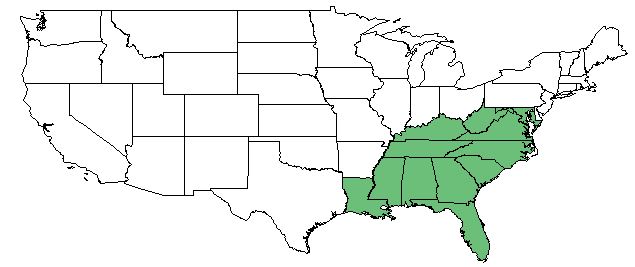Difference between revisions of "Sambucus canadensis"
(→Taxonomic Notes) |
|||
| Line 34: | Line 34: | ||
''S. canadensis'' proliferates in streambanks, thickets, marshes, moist forests, and disturbed areas. <ref name= "Weakley 2015"> Weakley, A. S. (2015). Flora of the Southern and Mid-Atlantic States. Chapel Hill, NC, University of North Carolina Herbarium. </ref> | ''S. canadensis'' proliferates in streambanks, thickets, marshes, moist forests, and disturbed areas. <ref name= "Weakley 2015"> Weakley, A. S. (2015). Flora of the Southern and Mid-Atlantic States. Chapel Hill, NC, University of North Carolina Herbarium. </ref> | ||
===Phenology=== <!--Timing off flowering, fruiting, seed dispersal, and environmental triggers. Cite PanFlora website if appropriate: http://www.gilnelson.com/PanFlora/ --> | ===Phenology=== <!--Timing off flowering, fruiting, seed dispersal, and environmental triggers. Cite PanFlora website if appropriate: http://www.gilnelson.com/PanFlora/ --> | ||
| − | ''S. canadensis'' | + | ''S. canadensis'' has been observed to flower January through August. <ref name= "PanFlora"> Nelson, G. PanFlora: Plant data for the eastern United States with emphasis on the Southeastern Coastal Plains, Florida, and the Florida Panhandle. www.gilnelson.com/PanFlora/ Accessed: 29 MAY 2018 </ref> The leaflets, particularly of young shoots or stunted sprouts, are often variegated. This is one of the first woody plants to leaf out in the spring. The variation is clinal, and bipinnate leaves are seen as far north as coastal NC. <ref name= "Weakley 2015"/> |
<!--===Seed dispersal===--> | <!--===Seed dispersal===--> | ||
<!--===Seed bank and germination===--> | <!--===Seed bank and germination===--> | ||
| + | |||
===Fire ecology=== <!--Fire tolerance, fire dependence, adaptive fire responses--> | ===Fire ecology=== <!--Fire tolerance, fire dependence, adaptive fire responses--> | ||
''S. canadensis'' is not fire resistant, but has a medium fire tolerance. <ref name= "USDA Plant Database"/> | ''S. canadensis'' is not fire resistant, but has a medium fire tolerance. <ref name= "USDA Plant Database"/> | ||
Revision as of 14:19, 6 November 2018
Common name: common elderberry [1], American black elderberry [2]
| Sambucus canadensis | |
|---|---|

| |
| Photo by John Hilty hosted at IllinoisWildflowers.info | |
| Scientific classification | |
| Kingdom: | Plantae |
| Division: | Magnoliophyta - Flowering plants |
| Class: | Magnoliopsida - Dicots |
| Order: | Dipsacales |
| Family: | Caprifoliaceae |
| Genus: | Sambucus |
| Species: | S. canadensis |
| Binomial name | |
| Sambucus canadensis (L.) R. Boll | |

| |
| Natural range of Sambucus canadensis from USDA NRCS Plants Database. | |
Contents
Taxonomic Notes
Synonyms: S. nigra Linnaeus ssp. canadensis (Linnaeus) R. Bolli; S. canadensis var. sbmollis Rehder; S. simpsonii Rehder ex Sargent; Sambucus canadensis Linnaeus var. laciniata A. Gray
Varieties: none
Description
S. canadensis is a perennial shrub/tree of the Caprifoliaceae family native to North America, Canada, and Puerto Rico and introduced to Hawaii, the U.S. Virgin Islands, and the Pacific Basin. [2]
Distribution
S. canadensis is found: everywhere in the United States excluding Washington, Oregon, Idaho, Nevada, and Utah; the Manitoba, Ontario, Quebec, New Brunswick, and Nova Scotia areas of Canada; every island of Hawaii; Puerto Rico; the Pacific Basin; and the U.S. Virgin Islands. [2] Specimens have been collected from swamp regions, bottomland woods, floodplain woods, and edge of fully shaded woods. [3]
Ecology
Habitat
S. canadensis proliferates in streambanks, thickets, marshes, moist forests, and disturbed areas. [1]
Phenology
S. canadensis has been observed to flower January through August. [4] The leaflets, particularly of young shoots or stunted sprouts, are often variegated. This is one of the first woody plants to leaf out in the spring. The variation is clinal, and bipinnate leaves are seen as far north as coastal NC. [1]
Fire ecology
S. canadensis is not fire resistant, but has a medium fire tolerance. [2]
Use by animals
S. canadensis is some palatable to browsing animals. [2]
Conservation and Management
Cultivation and restoration
Photo Gallery
References and notes
- ↑ 1.0 1.1 1.2 Weakley, A. S. (2015). Flora of the Southern and Mid-Atlantic States. Chapel Hill, NC, University of North Carolina Herbarium.
- ↑ 2.0 2.1 2.2 2.3 2.4 USDA Plant Database https://plants.usda.gov/core/profile?symbol=SANIC4#
- ↑ URL: http://herbarium.bio.fsu.edu. Last accessed: June 2018. Collectors: Lisa Keppner, Ed Keppner, R.K. Godfrey, Grady W. Reinert, Wayne D. Longbottom, David H. Williams. States and counties: Florida (Bay, Marion, Union, Jefferson, Jackson, Leon, Seminole)
- ↑ Nelson, G. PanFlora: Plant data for the eastern United States with emphasis on the Southeastern Coastal Plains, Florida, and the Florida Panhandle. www.gilnelson.com/PanFlora/ Accessed: 29 MAY 2018